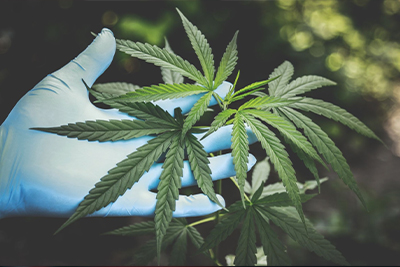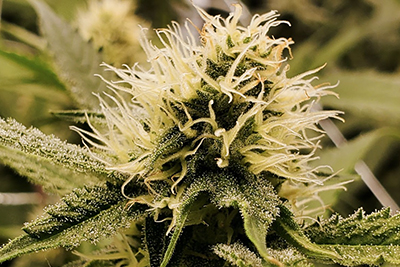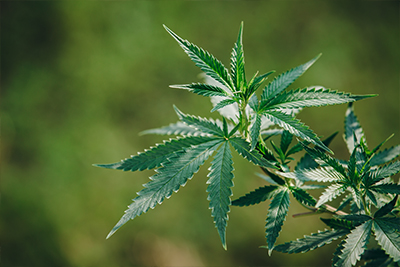Cannabis
Cannabis is possibly one of the earliest plants to be cultivated and has a long history of human use. Most ancient cultures didn’t grow the plant to get high, but as herbal medicine, likely starting in Asia around 500 BC.
After a worldwide spread throughout different cultures by the late 1800s, cannabis extracts were sold in pharmacies and doctors’ offices up until 1937 when political and racial factors led to the criminalization of marijuana in the United States, though its legal status is changing in many places.

The history of Strains
Around the world, cannabis plants were bred to intensify specific characteristics of the plant, each with unique physical and psychoactive effects. All strains throughout history share a common ancestor.
Indica in depth
Cannabis indica is native to harsh, dry, and turbulent climates. Indica plants are short and stocky with bushy greenery and chunky leaves that grow wide and broad. These strains often have higher levels of CBD, but the THC content isn’t necessarily less. Indica is sought after for its intensely relaxing effects.

Sativa in depth
Cannabis sativa is found primarily in hot, dry climates with long sunny days. Sativa plants are tall and thin with finger-like leaves. It has lower doses of CBD and higher doses of THC.Typically this strain produces a “mind high,” or an energizing, anxiety-reducing effect
Hybrids in depth
Hybrids are typically grown from a combination of sativa and indica strains. The appearance depends on the combination of the parent plants. Many hybrid cannabis plants are bred in order to increase the THC percentage, but each type has a unique ratio of the two cannabinoids. They can range from reducing anxiety and stress to easing symptoms of chemotherapy or radiation.

Ruderalis in depth
Cannabis ruderalis, also exists. However, it isn’t widely used because it usually doesn’t produce any potent effects. Ruderalis plants adapt to extreme environments and grow quickly. This strain typically has little THC and higher amounts of CBD, but it may not be enough to produce any effects.
The power of hemp
Hemp is the same species of plant as cannabis. But unlike cannabis, hemp contains very low levels of tetrahydrocannabinol (THC), less than 0.3% and may have higher concentrations of cannabidiol(CBD), which potentially mitigates the psychoactive effects of THC.
Lets talk a little bit more about CBD:
Is CBD Legal?
CBD is legal in all 50 states, but the laws governing its use vary. In 2018, the Farm Bill made hemp legal in the United States, and CBD is a naturally occurring compound found in hemp. This means that CBD is legal to buy and sell in most states, even without a medical marijuana license.
However, there are some states that have stricter laws governing CBD. For example, some states require that CBD products be derived from hemp that has been grown in the state. Others require that CBD products be tested for THC content and labeled accordingly.
It is important to check the laws in your state before buying or using CBD. You can find more information about CBD laws by visiting the National Conference of State Legislatures website.
Is CBD Safe?
CBD is generally considered to be safe for most people. However, it is important to start with a low dose and gradually increase it as needed. Some people may experience side effects such as nausea, fatigue, and irritability. CBD can also interact with certain medications, so it is important to talk to your doctor before using it.
How Can CBD Be Taken?
There are many ways to take CBD. It is available in oils, extracts, capsules, patches, vapes, and topical preparations. The best way to take CBD depends on your individual needs and preferences.
If you are looking for a quick way to feel the effects of CBD, you can take it sublingually (under the tongue). This allows the CBD to be absorbed directly into the bloodstream. You can also take CBD orally in the form of capsules or gummies.
If you are looking for a way to target specific areas of your body, you can use a topical CBD product. Topical CBD products can be applied to the skin to relieve pain, inflammation, and other skin conditions.
What to Expect When Trying CBD?
The effects of CBD vary from person to person. Some people may feel relaxed or calm, while others may experience an increase in energy or focus. CBD may also help to improve sleep quality and reduce pain.
It is important to be patient when trying CBD. It may take some time to find the right dose and product for you. If you are not sure how to take CBD or what to expect, talk to your doctor.
How Long Does It Take to Feel the Effects of CBD?
The time it takes to feel the effects of CBD varies depending on the method of administration. Sublingual CBD can be felt within 15 minutes, while oral CBD can take up to 2 hours. Topical CBD may take several hours to take effect.
Does CBD Show Up on a Drug Test?
CBD itself does not show up on drug tests. However, some CBD products contain THC, which can show up on drug tests. If you are concerned about testing positive for THC, it is important to choose a CBD product that is THC-free.
When choosing a CBD product, it is also important to look for products that have been tested by a third-party lab. This will ensure that the product contains the amount of CBD that is advertised and that it is free of contaminants.

The Chemistry behind Cannabis
Cannabinoids
Cannabis plants contain dozens of chemical compounds called Cannabinoids responsible for many of the effects of cannabis use.
THC is the main psychoactive compound in cannabis plants responsible for the “high” or state of euphoria. CBD is non-impairing, however, it may produce many physical and health benefits. CBN is used to ease symptoms and side effects of neurological conditions.THCA is similar to THC, but it doesn’t cause any psychoactive effects. Its potential benefits include reducing inflammation caused by autoimmune diseases. CBG is thought to help reduce anxiety and symptoms of obsessive-compulsive disorder, post-traumatic stress disorder, and depression.
Terpenes are the compounds responsible for a plant's scent and flavor. Unlike other botanical species, each strain of cannabis has a unique terpene profile. Terpenes and cannabinoids work together to develop a strain's particular flavor and resulting high, a phenomenon now known as the entourage effect.
About Edibles
Edibles are food and beverages infused with Cannabis. They produce longer and more sustained effects than other methods of consumption, because the cannabinoids are metabolized by the liver.
We always recommend to start with the lowest dose and wait two hours for the full effects before consuming more. Your wait time depends on your metabolism and prior cannabis experience. The effects will last roughly 4-6 hours. Be mindful of your tolerance to avoid an overwhelming experience.
Enjoy Cannabis everywhere
Edibles are transportable and easy to use. Find your best option for any occasion, from a picnic at the park with your family to a massive concert with your best friend.
Safety and Sharing.
Do not drive or operate heavy machinery when under the influence of cannabis. These products should not be consumed by children, persons under the age of 21 or women who are pregnant.
The effects can be especially intense when consumed on an empty stomach. In case of overconsumption stay hydrated and calm until the effects start to dissipate. Keep these products cool, safe and sealed.
If you are discovering CBD or in the middle of your journey, let us know in the comments if this info was helpful 💚

